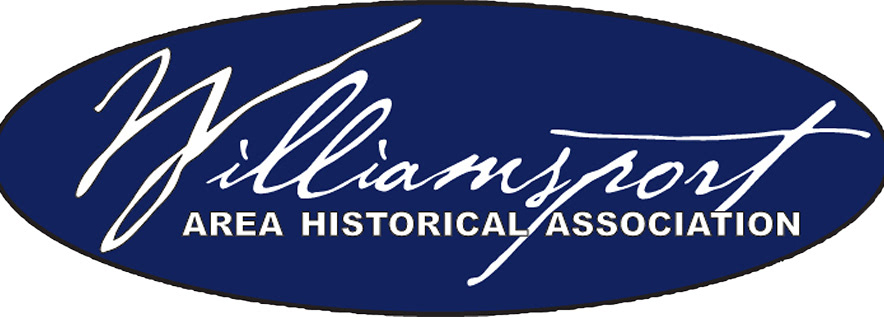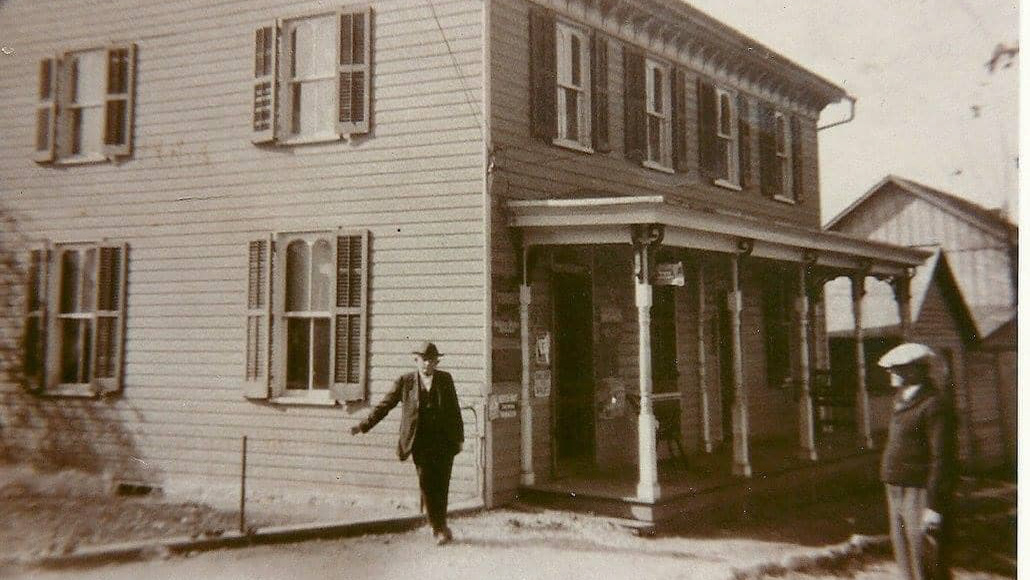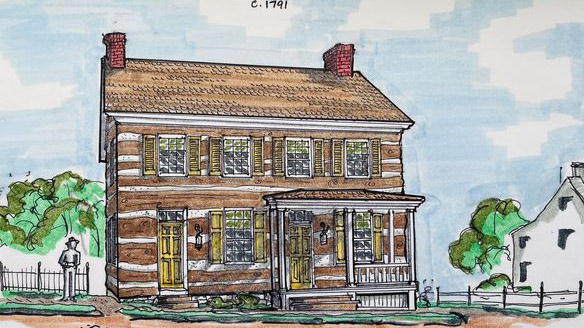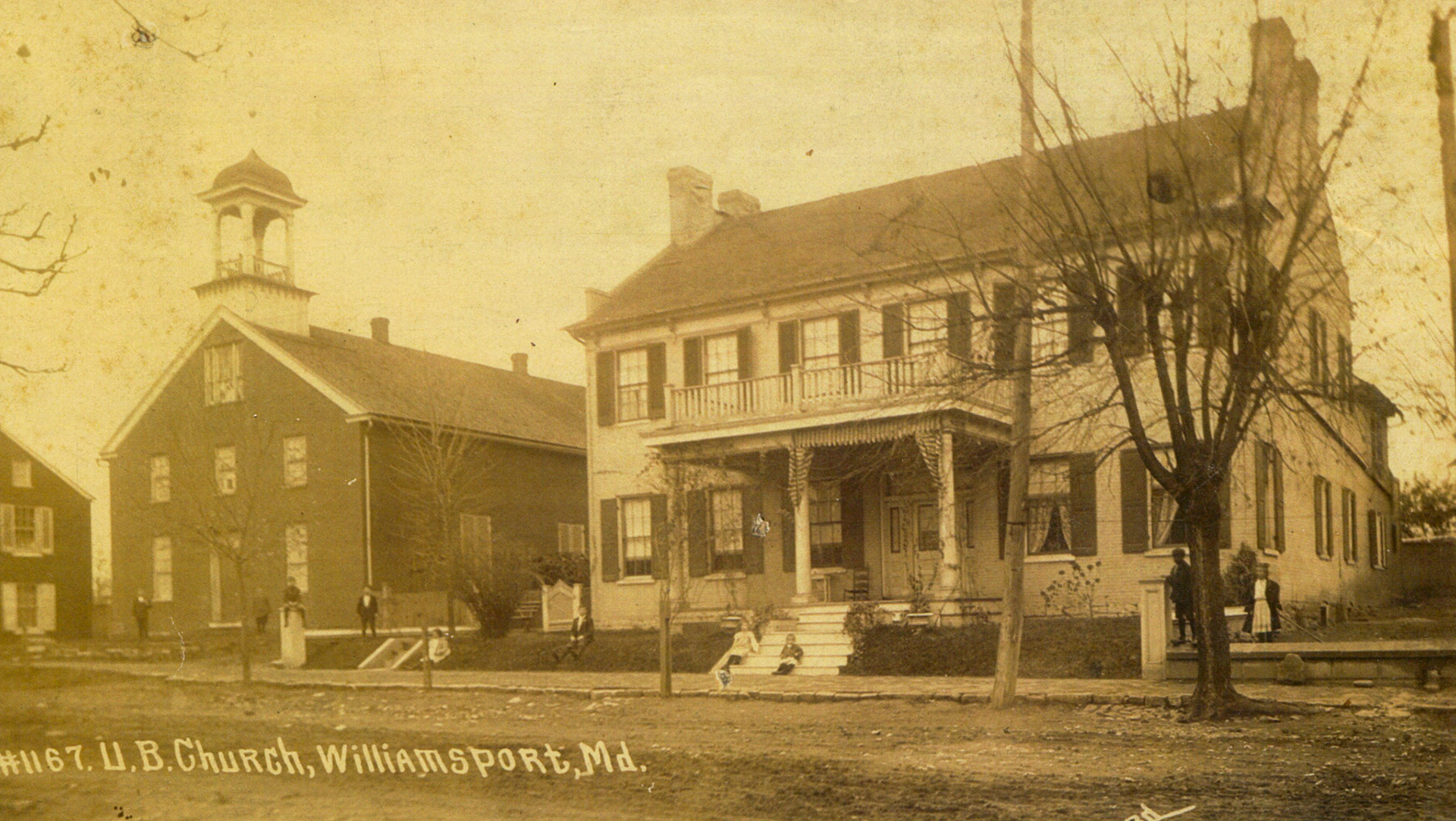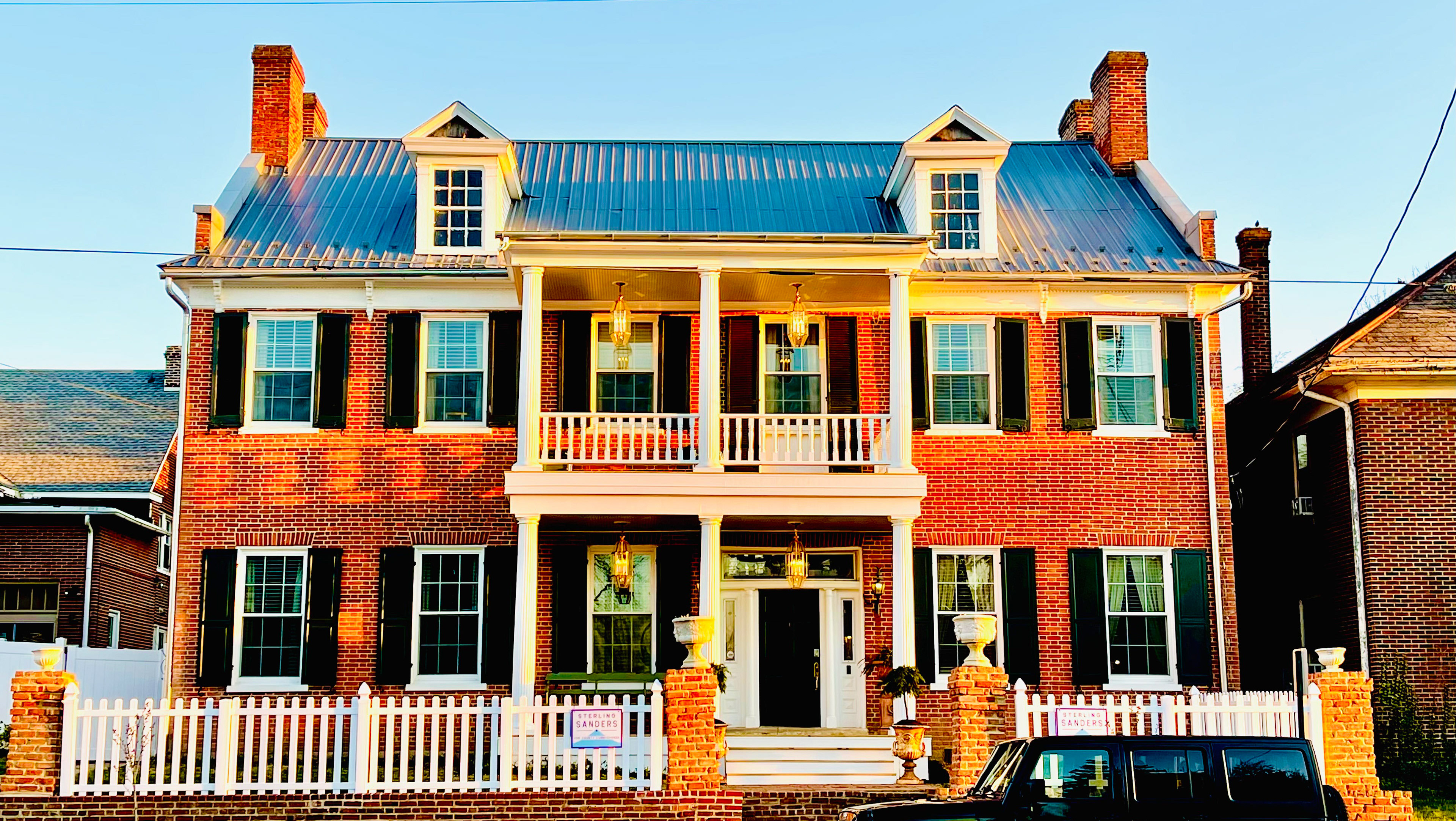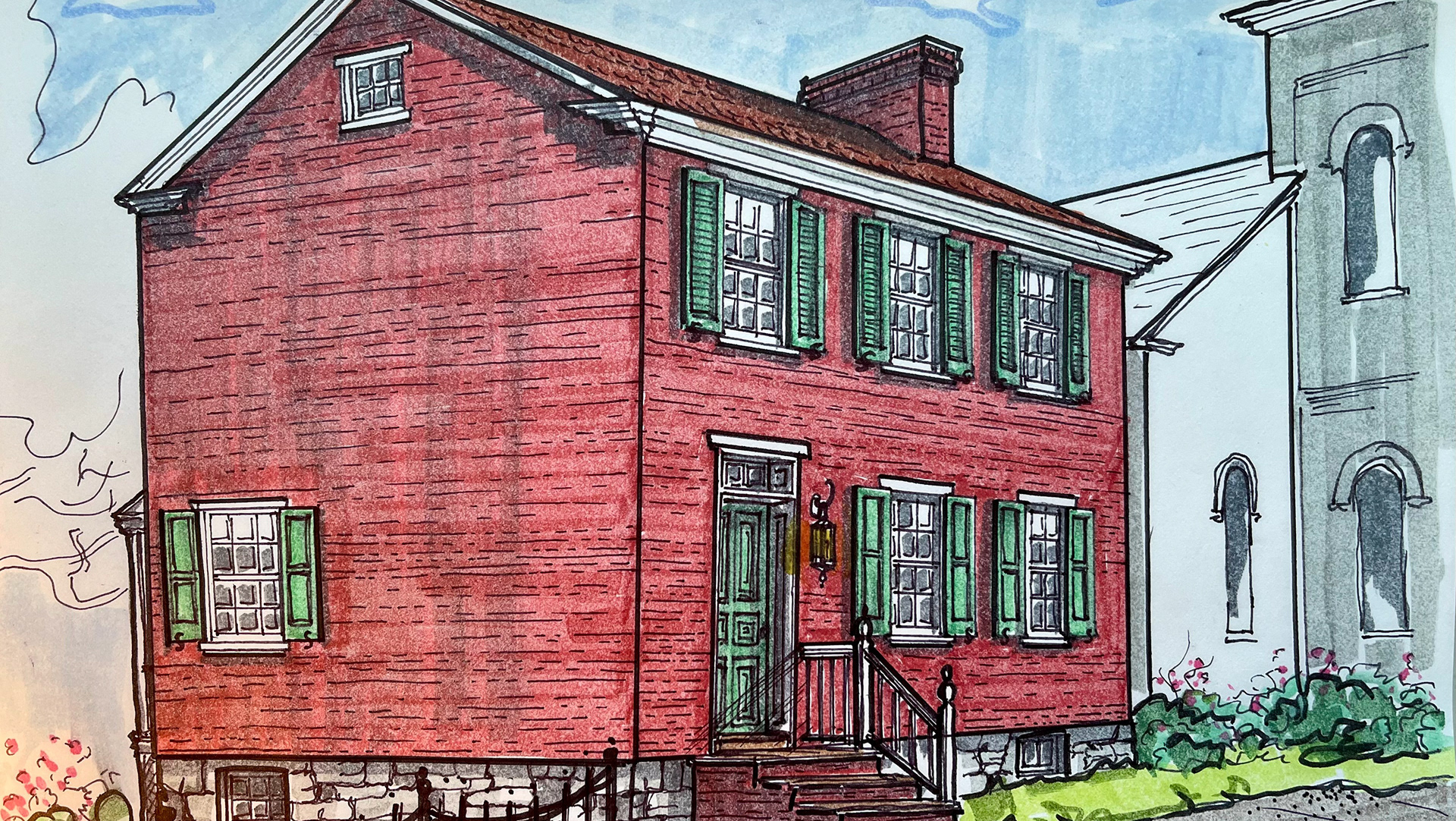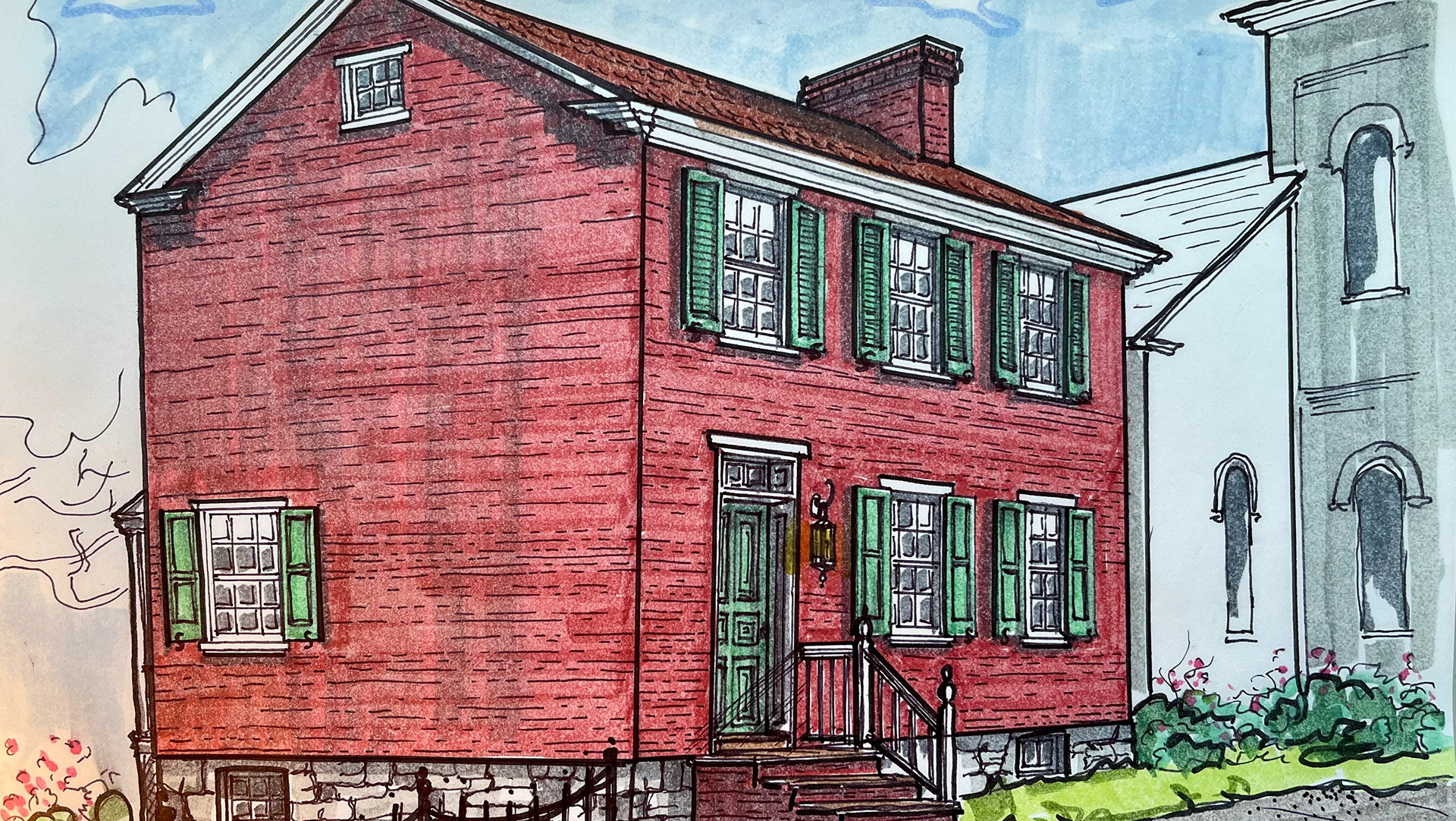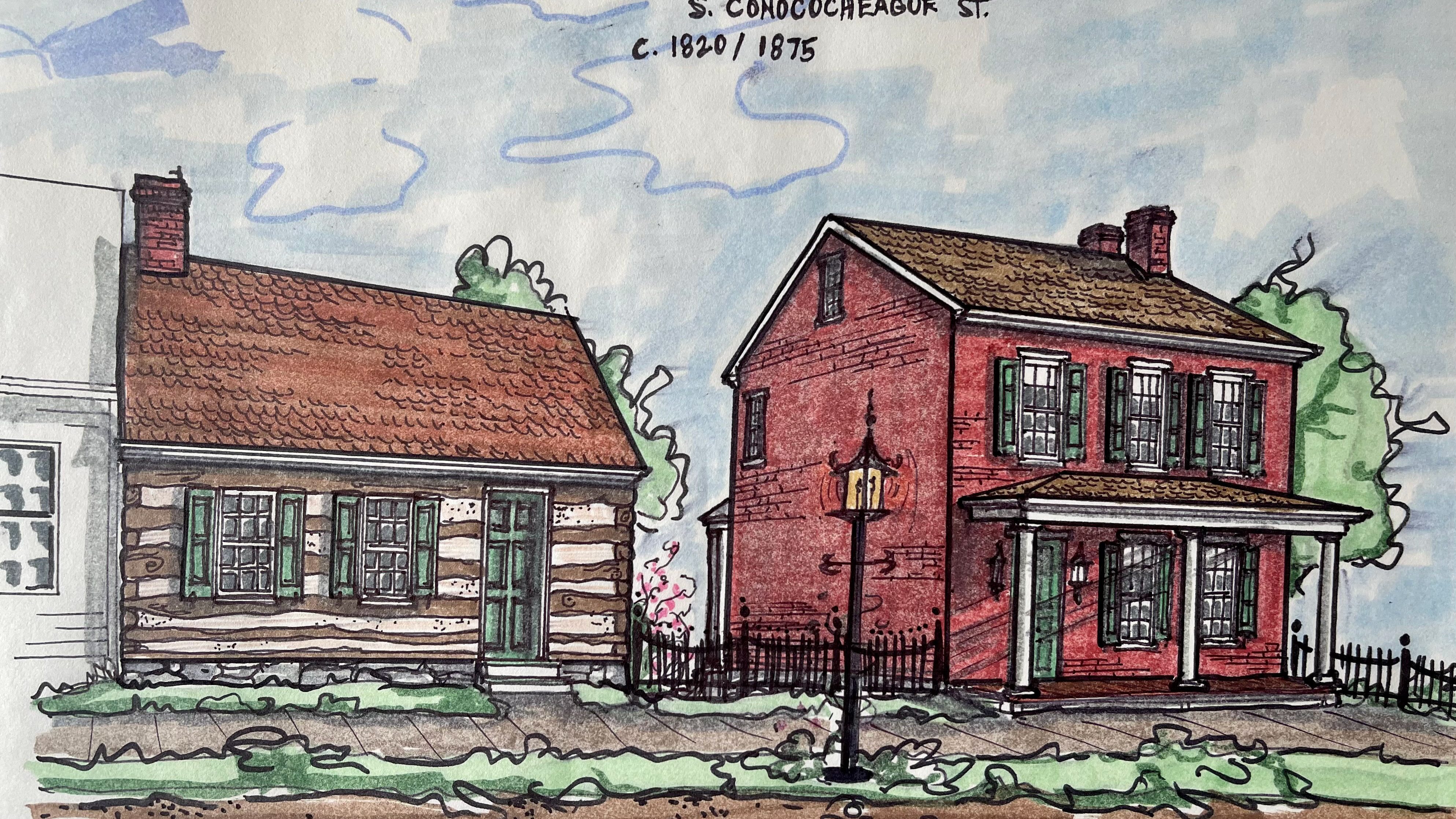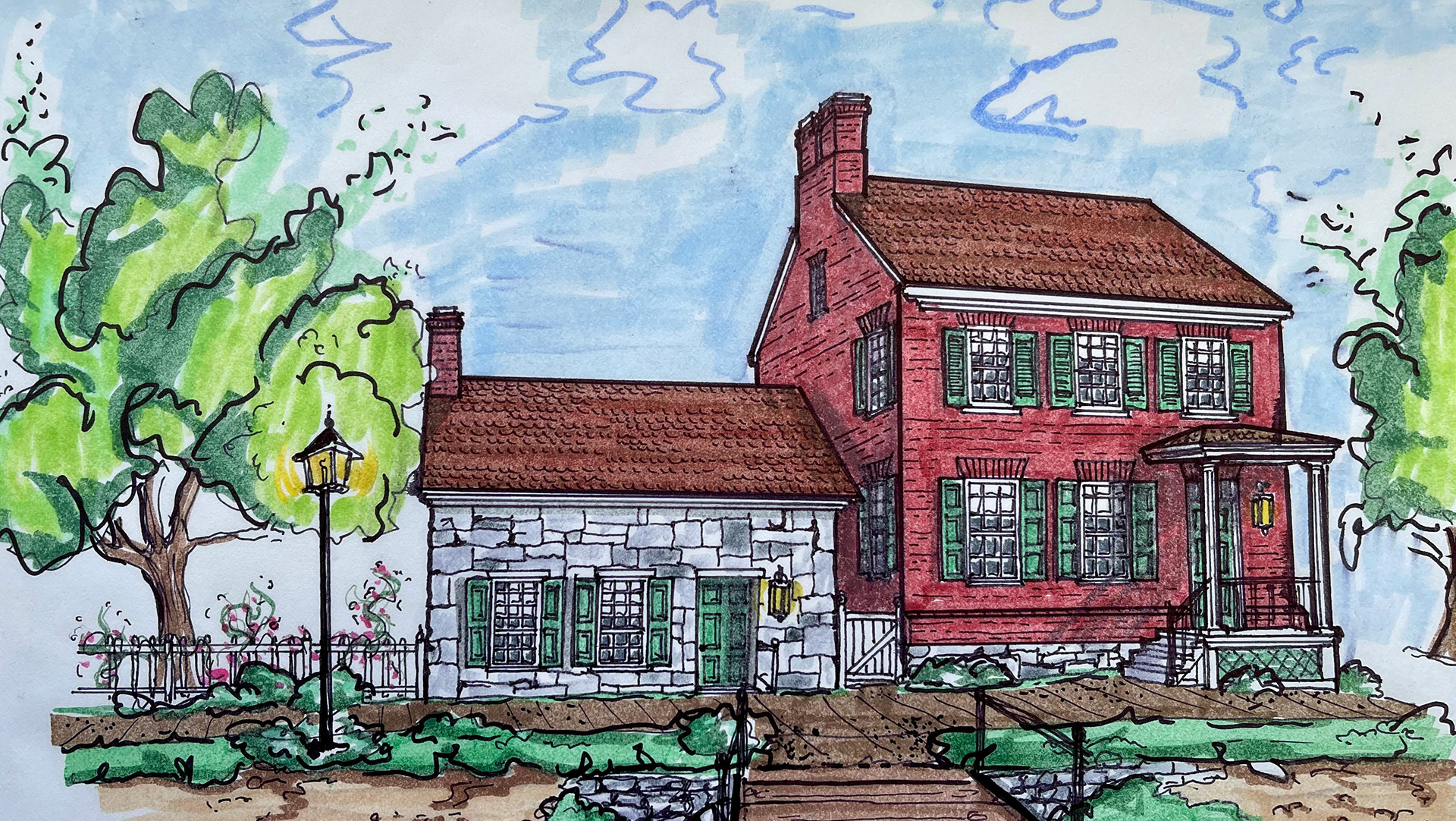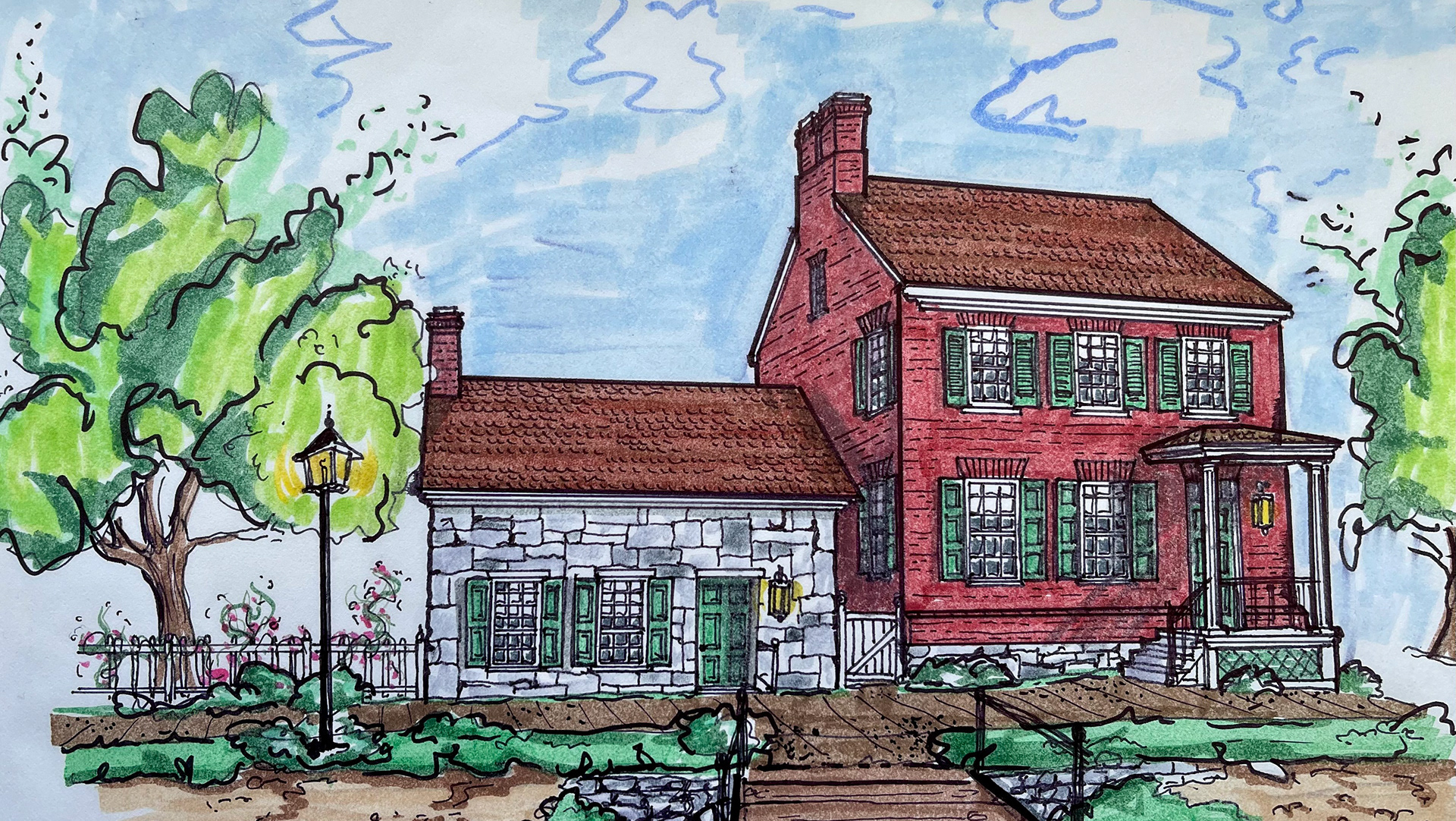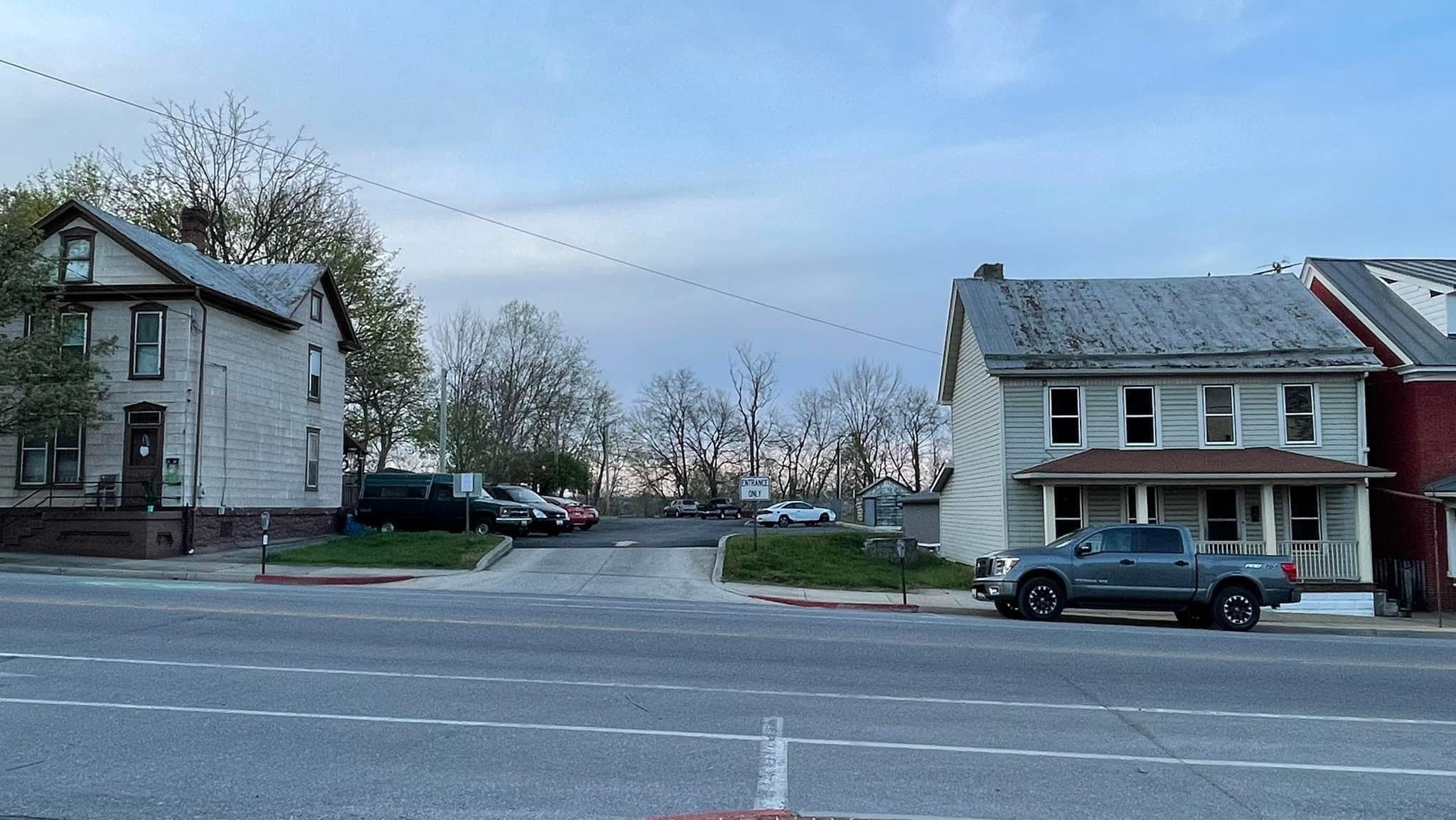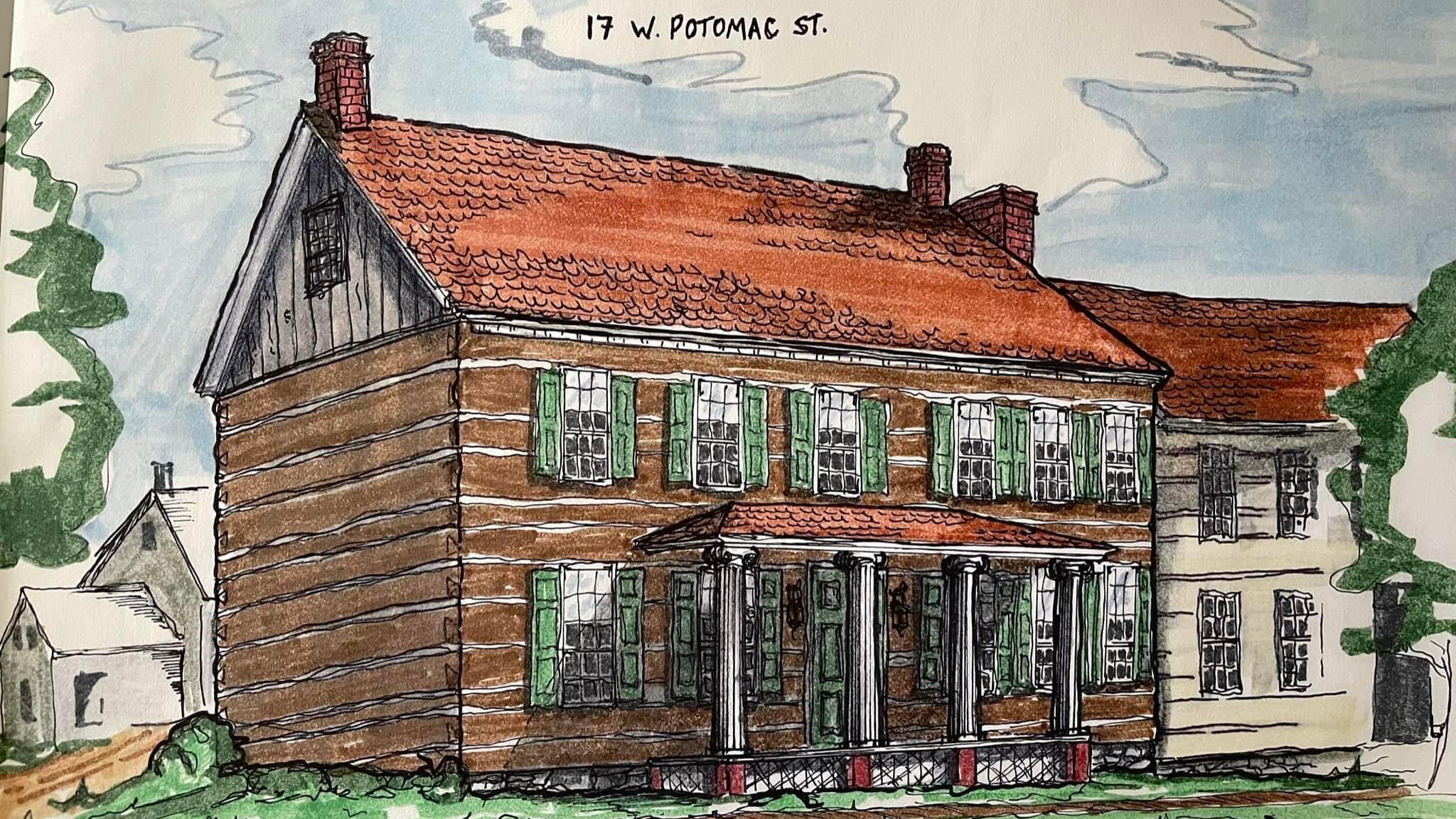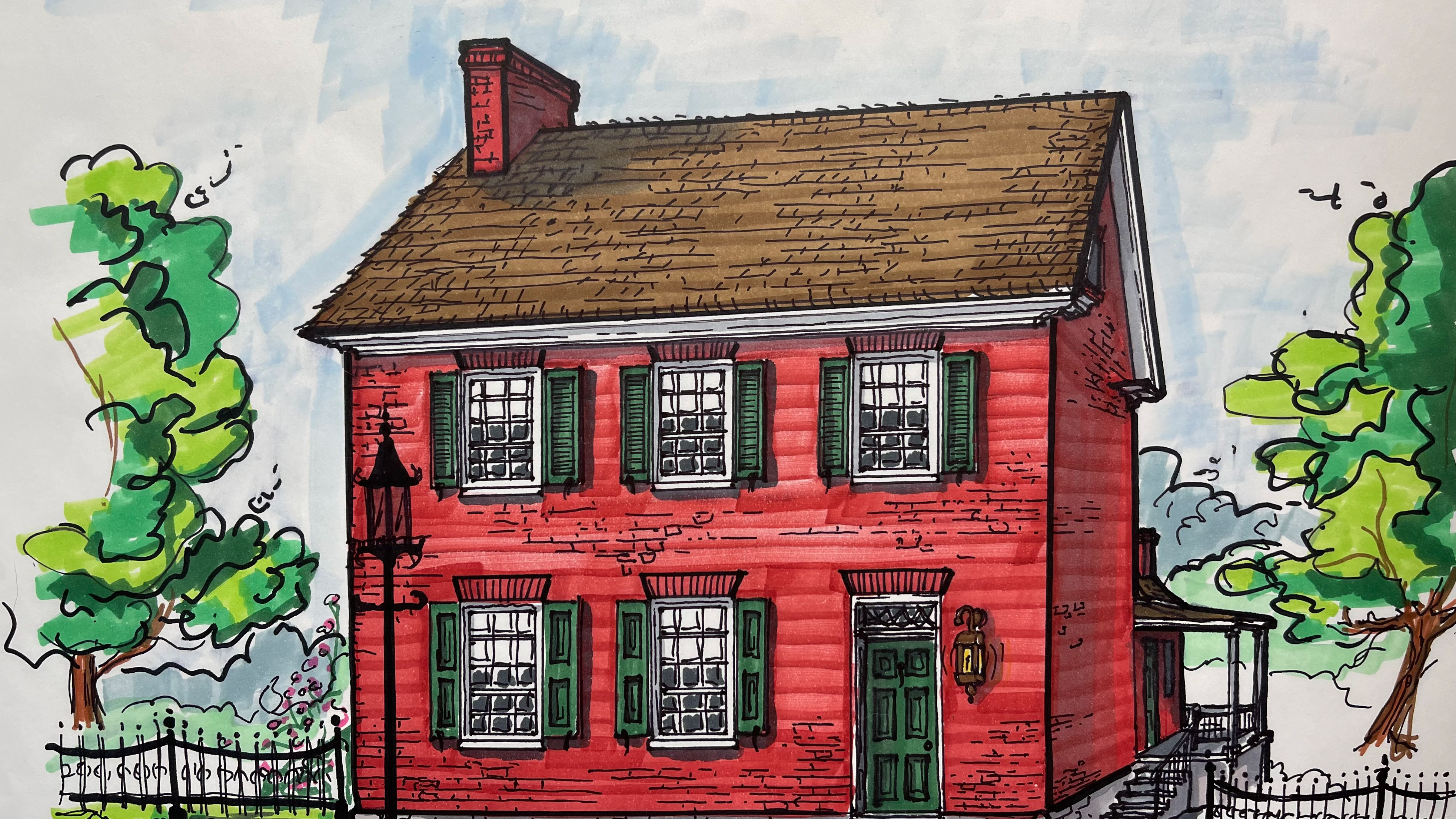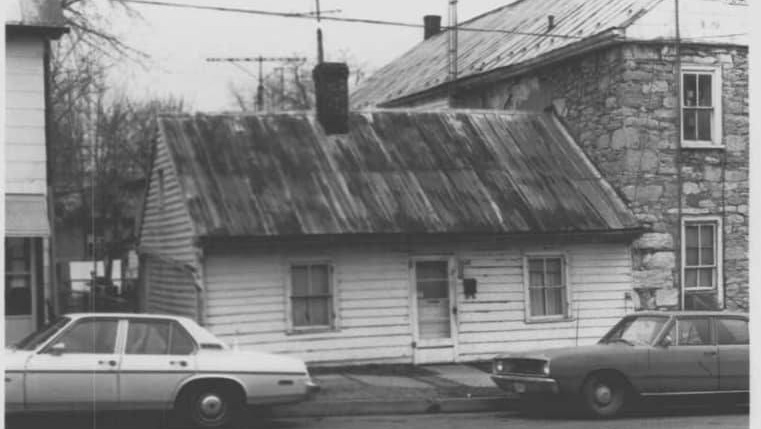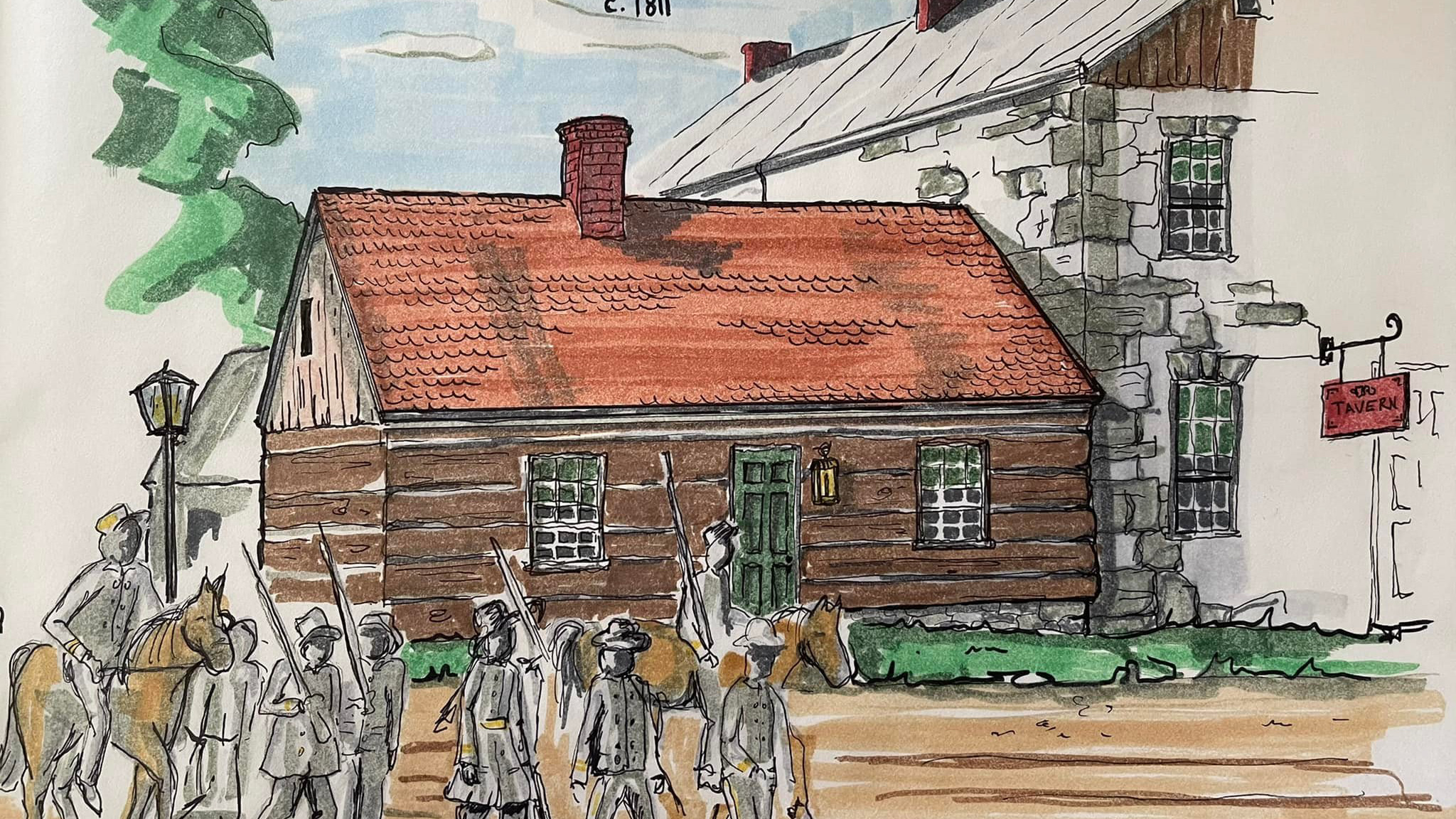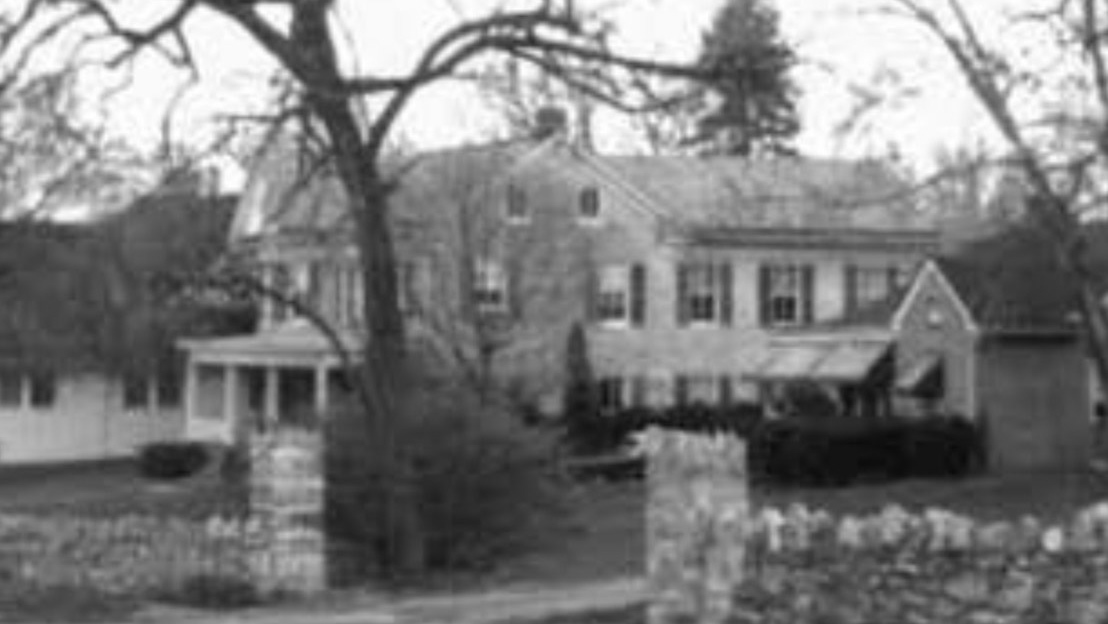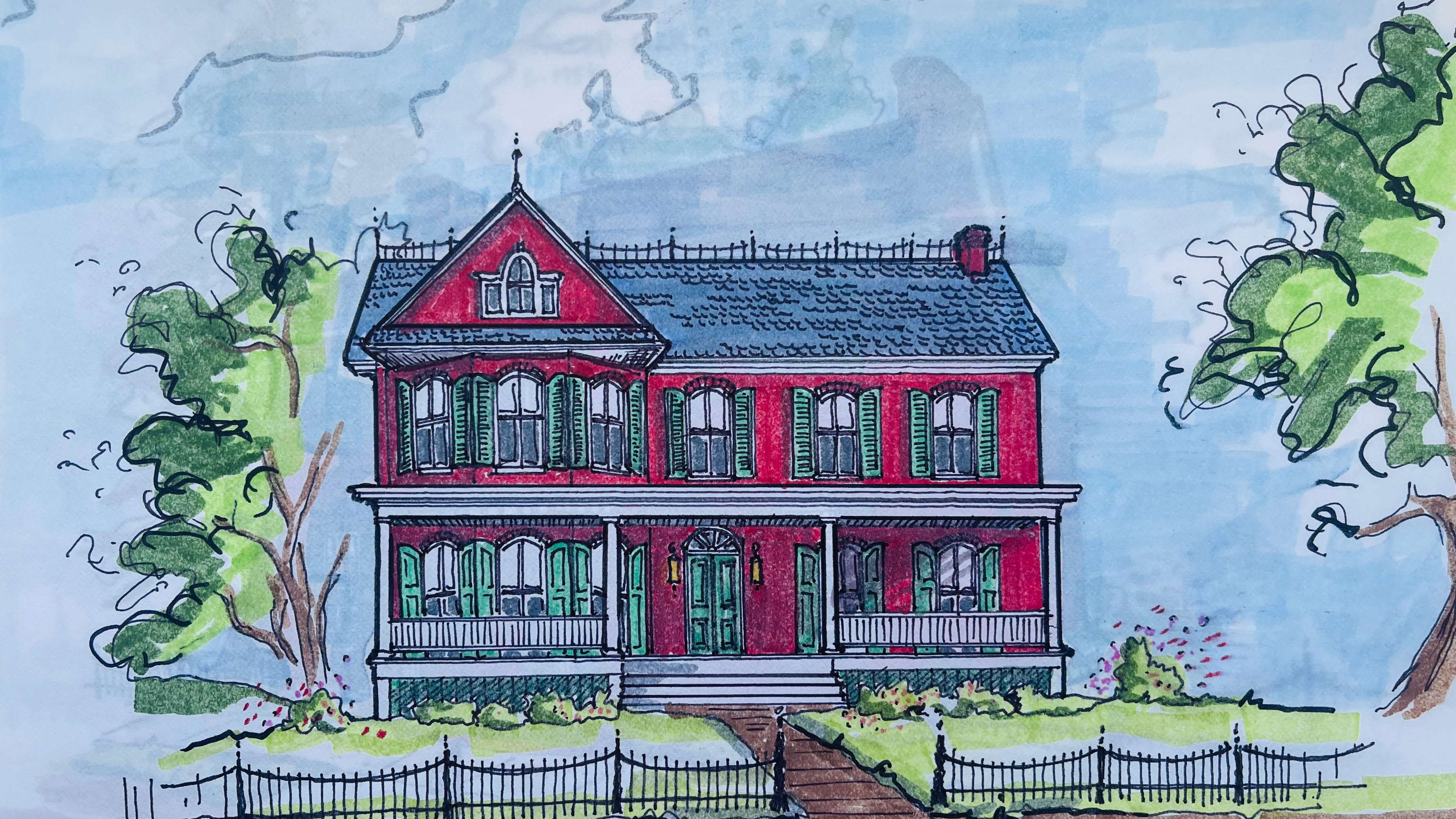Important Note:This is a significant historical account of Williamsport's past, dating from its founding. These stories are known because later generations asked their older relatives about history. It is always important to listen to the tales of our elders, lest we forget where we come from and who we are. ENJOY!!
On original lot 56, along the north side of West Salisbury Street, sits a sweet, unassuming, four-bay log house covered in blue vinyl siding and a three-bay porch with the 1960s/70s metal supports spanning the facade. The structure is one and a half stories high and sits on a limestone foundation built several feet higher than the sidewalk. The home is built directly at the corner of the alley along the western side. The old homestead has a large ell (addition) to the rear or north, likely the earlier section built about 1790. Currently for sale, the historic home sits on the western half of the original 66x196 foot lot, long ago broken up as many lots were as the town grew in the 18th and 19th centuries. A person with grit and vision could quickly restore this old beauty to its former glory, as many of its historic characteristics remain. Details such as its cedar German siding lay hidden beneath the modern, tired vinyl siding. Heavy pegged jams at the windows await their original 9/6 sashes to be re-installed. Inside, the beautiful original staircase, moldings, chimney cupboards, fireplaces, and period heart of pine random width flooring hidden beneath layers of carpet and linoleum await restoration.
Matthias Ridenour leased lot 56 from Otho Holland Williams sometime in the late 1780s or early 1790s. The Ridenours sold the lot to Johannes Nitzel in 1794 for 115 pounds sterling, a respectable sum for an improved lot with a modest log house in 18th-century Williamsport. Johannes Nitzel/Neitzle (1753-1819) was born in the Rhine Valley of Germany. He was large, standing at least six feet tall, weighing 200 pounds, with blond hair, a striking figure for that era. It is unclear exactly what year Johannes "John" immigrated to America. Still, he was sent here by the German Aristocracy, for which he was a bodyguard, to fight for the British, with whom they had a contract to send paid men or "Hessians" to fight for England. This would have been at the beginning of the war, perhaps late 1775 or 1776, after the "shot heard 'round the world" took place in April 1775 in Massachusetts. Unbeknownst to the unscrupulous Aristocracy, the German people held great fondness and sympathy for the Americans and their fight for freedom against King George. Johannes was one of these sympathizers, and on the trip across the Atlantic, he decided he would desert his contract and fight for George Washington and freedom, something he had not known back home. Johannes and two others jumped ship off the shore of Bermuda and boarded another ship bound for the American Colonies, promising to work for their cost of passage. While swimming for shore, the Germans were discovered and fired upon; one was killed, but Johannes and his other friend escaped. The two men remained lifelong friends.
Upon arrival in America, Mr. Schnebly of Washington County, MD, near present-day Downsville, bought his papers. Mr. Schnebly agreed to let Johannes join the Continental Army, allowing Johannes to promise to pay off his debts after the war. Already a patriot in a new and foreign land, Johannes joined the company of Captain Peter Mantz out of Frederick, MD; he was part of the Flying Camp. Johannes and the other soldiers marched to New York City to fight with George Washington himself at the Battle of Harlem Heights, where many men were lost in the fight for freedom.
Johannes Nitzel must have known, respected, and agreed with Otho, and when General Williams established Williamsport in 1787, he was among the first to lease a lot (number 55, next door to this house) in 1788. Johannes built as his residence the two-story log house at 33 West Salisbury, now occupied by Ed Kave, owner of The Third Base Tavern and the Pythian Castle; six years later, John purchased this lot and built a section of this house and a Cooper Shop (Barrel Shop), which is now buried inside 35 W. Salisbury Street between these two houses.
These accounts were taken from William Alexander Miller's "Four Old Families of Williamsport, MD: Hammond, Nitzel, Hetzer, Melown. " The narratives were told by John Nitzel, the 3rd (b.1824) of Williamsport, resident of 37 West Salisbury Street (aged 76), in August 1900 and published in 1941.
After settling in Williamsport at 37, Johannes married Barbara Miller (1760-1831), also of Germany, in 1790. Johannes and Barbara had five children, all girls except Johannes Junior. Johannes was a founding elder of the Zion Lutheran Church in Williamsport and was listed as such in the formation papers in December of 1806. Johannes Sr. died on Christmas Day, 1819, at age 66, leaving behind a life well lived and a tale for the ages, one all Williamsport should know. His son, Johannes Jr. (1797-1859), was also a cooper, a Free-Mason, and a member of the Williamsport Town Council from incorporation in 1823 until he died in 1859; his wife was Eliza Hammond (1806-1889), the Hammonds had a large farm just across the Potomac. Johannes Jr. purchased lot 56 with the small log cabin and Cooper Shop next door to his parent's house from his father's estate and built the sizeable front portion of logs along Salisbury in about 1826.
When Barbara passed away in 1831, the estate sold the house at 33 West Salisbury Street to Magdelena or "Polly" Nitzel Melown (1800-1870), 3rd daughter of Johannes Sr. and Barbara. Brother and sister would go on to own both houses until their deaths. The homes at 37-33 West Salisbury Street were owned by descendants of Johannes and Barbara Nitzel for nearly 200 years when they left the family in the 1970s and 1980s.
Williamsport remains a reasonably well-intact early American town, but we must not take it for granted. Williamsport has lost too many, and we have NONE TO SPARE. Over 50 buildings with histories equally as crucial as these houses have been lost in the last 40 years alone. As a community, we must protect and care for our most valuable resource, history, and community. These buildings should be registered under a Historic District Commission that will watch out for them so future generations can learn where they came from.
